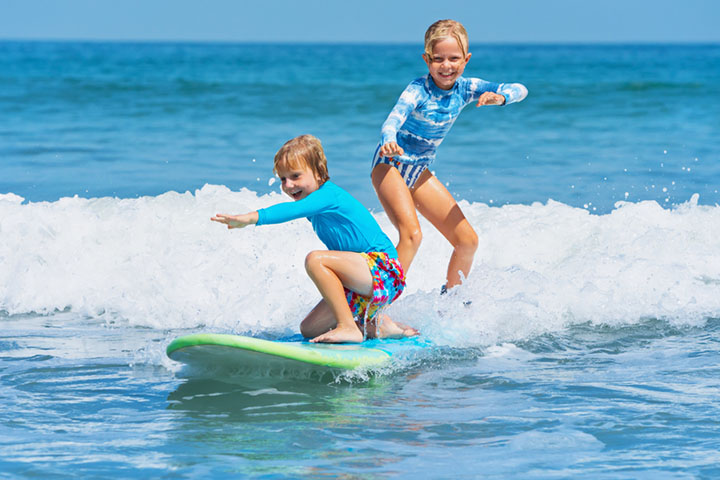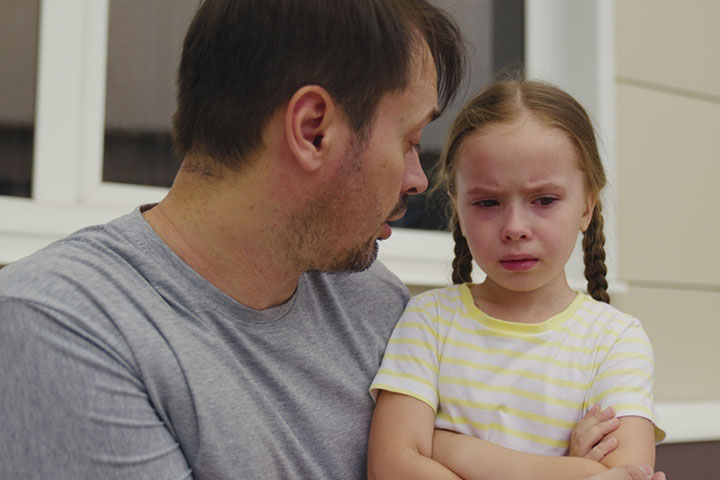
Image: Shutterstock
Let’s be honest, as much as every parent wants to safeguard and protect their child from all harm and danger, eventually your little one must grow up and face the world. And unfortunately, the world is not a safe place. This is why learning to be confident, unafraid and know how and when to take risks is such an important skill to teach your kids. This way they will be well prepared to take well informed risks and know how to bet on themselves. Adulthood can sometimes be one leap of faith after another and knowing how to engage in risky play as a child will teach your kids their strengths and limitations. They won’t doubt their own abilities and will have the confidence to see things through. But if you or your child is a little hesitant to start risky play, that’s okay. We’ve got a few tips for you to try. As you start to ease your kids into risky play they will learn to be more independent and resilient so you won’t have to hold their hand for long. Here are 3 ways you can get your kids comfortable with risky play.
1. Choose The Right Type Of Risky Play
Image: Shutterstock
There are a wide variety of risky play options to choose from and you can start with one that is most comfortable for your little one. It’s completely okay if your child would rather work on speed than deal with heights or rough and tumble play right out of the gate. Parents who are also new to risky play and more inclined to utilize tools. For example, they would rather start by teaching their kids how to use a blunt plastic knife to cut things like clay, or use a vegetable peeler. They give their kids plastic scissors and teach them how to cut paper. Teaching your kids skills that will be beneficial to them and that they can improve at is a great way to start risky play, not to mention that it will aid in their overall development.
Another way to help your child engage in risky play is to indulge them when they ask you to push their swing a little higher or let them wrestle their siblings as long as they are being playful and safe and not mean spirited. However, the most accessible and comfortable entry to risky play is through vicarious play. This is where kids get to see other children engage in risky play and learn to get a taste for it. Watching videos of kids climbing the monkey bars or jumping off of cliffs can also be a great way to introduce risky play to the kids. They need to see that it is safe and fun.
2. Listen To Your Kids When They Are Scared
Image: Shutterstock
It’s okay if your child is hesitant to start risky play. Their fears are valid and you don’t want to force them to fly. They must learn to engage in taking risks independently. But building their independence depends on listening to what they are saying and feeling, and respecting their boundaries. The aim is to create a space where they can make their own decisions and to slowly teach them how to use their bodies when they inevitably encounter situations that make them feel uncertain and uneasy. So remain attentive and guide them if they ask for support. For example, if you take your child to the beach and they want you to hold their hand when the water comes up to their knee, go ahead and assist them. The silver line is when the experience is exciting and fun but a little uncertain.
3. Risky Play Is Different From Reckless Play
Image: Shutterstock
Sure accidents happen even when you are being extremely safe. But there’s a difference between teaching your kids to take risks and simply encouraging them to be reckless. If your kid is the thrill seeking type, you might have to reign them back a little bit. Kids usually don’t have the ability to anticipate all the dangers that involve an activity which is why it’s important for parents to supervise their kids and step in if things are getting out of hand. It’s also a good idea to coach your fearless child to listen to their body. And explain to them how their actions can impact others, themselves and their environment. For example, it can be thrilling for your child to drive in their toy car in the park. But they might hurt other kids by bumping into them or a child on a swing can accidentally crash into them.
At the end of the day you want to give your kids the tools they need to be independent and confident risk takers so that they can be prepared to face a scary, unpredictable world. And engaging in risky play is one step in the right direction!















